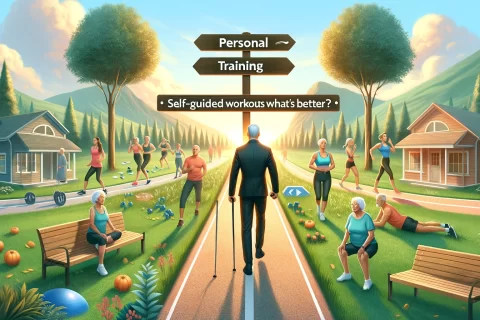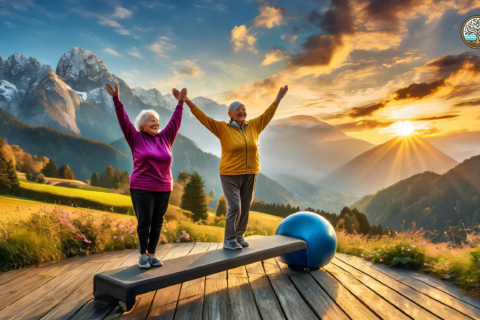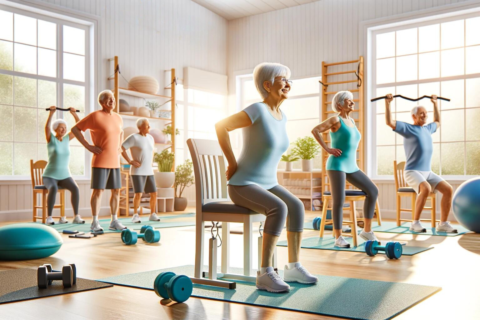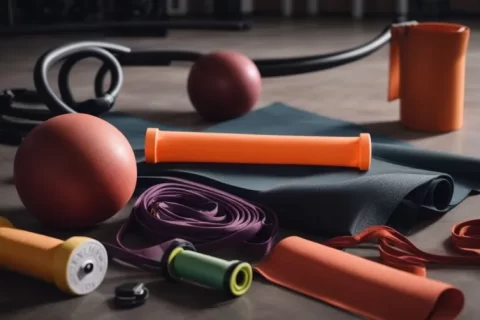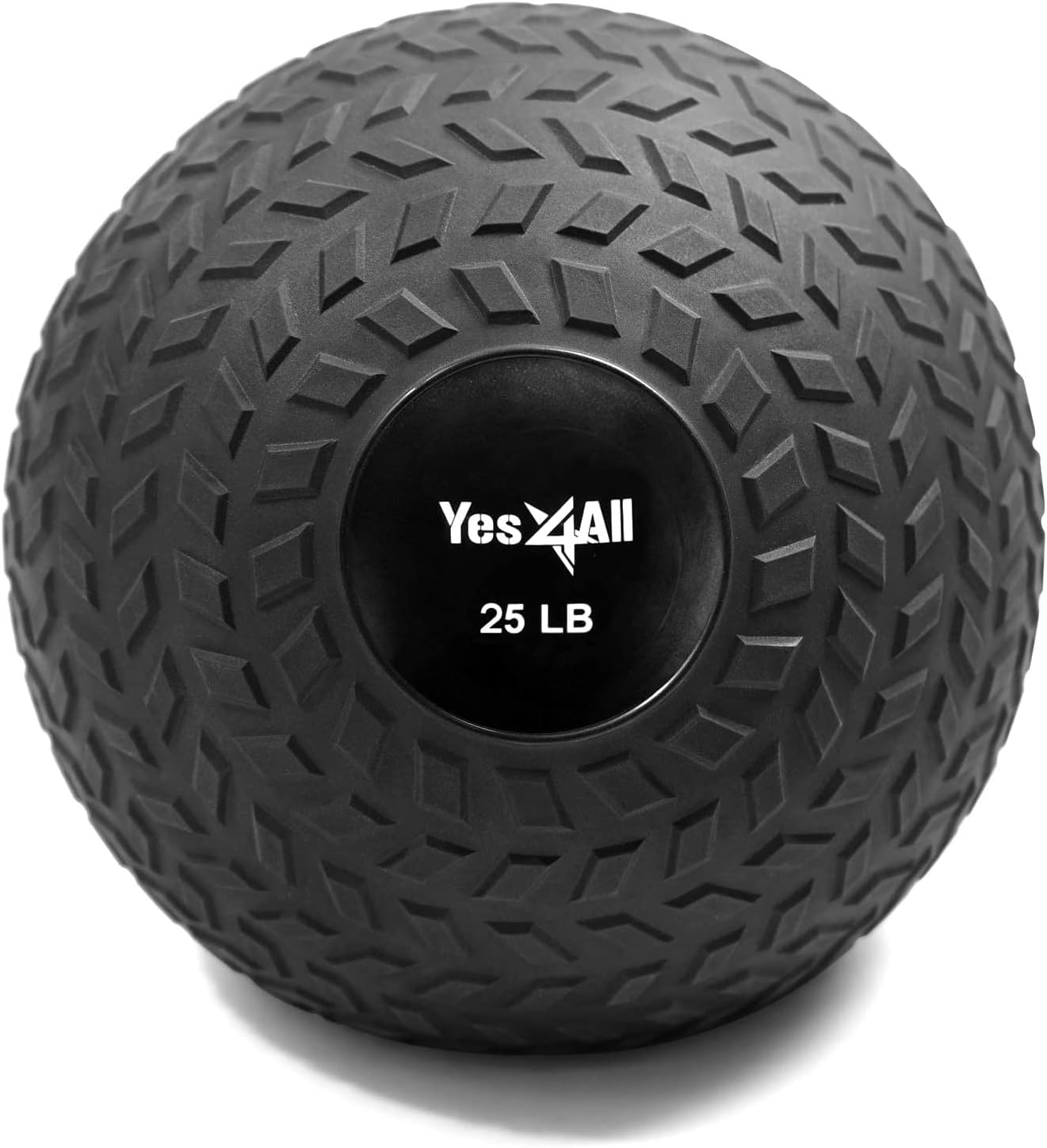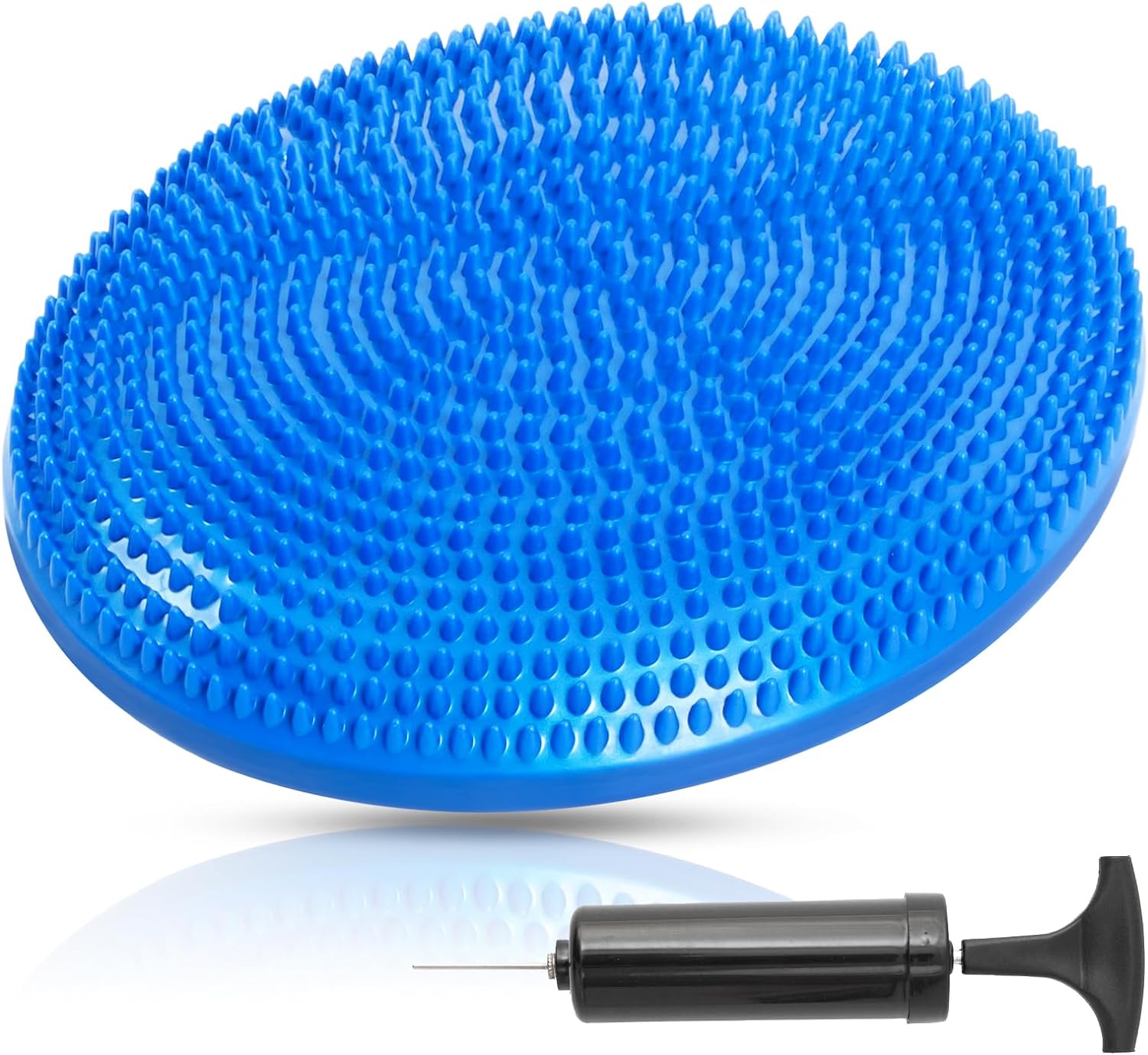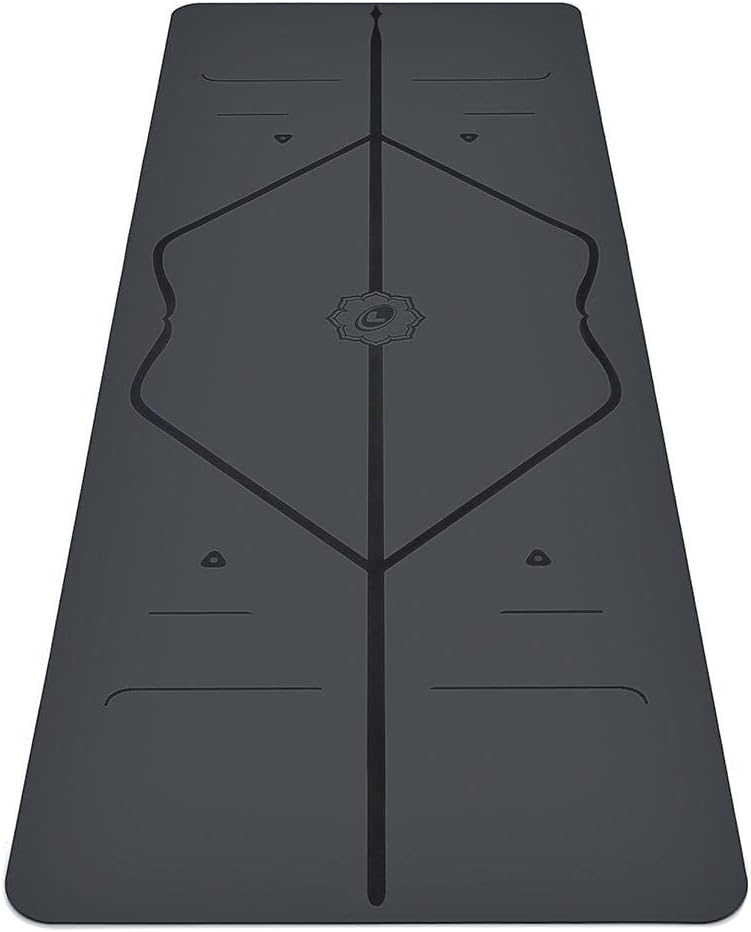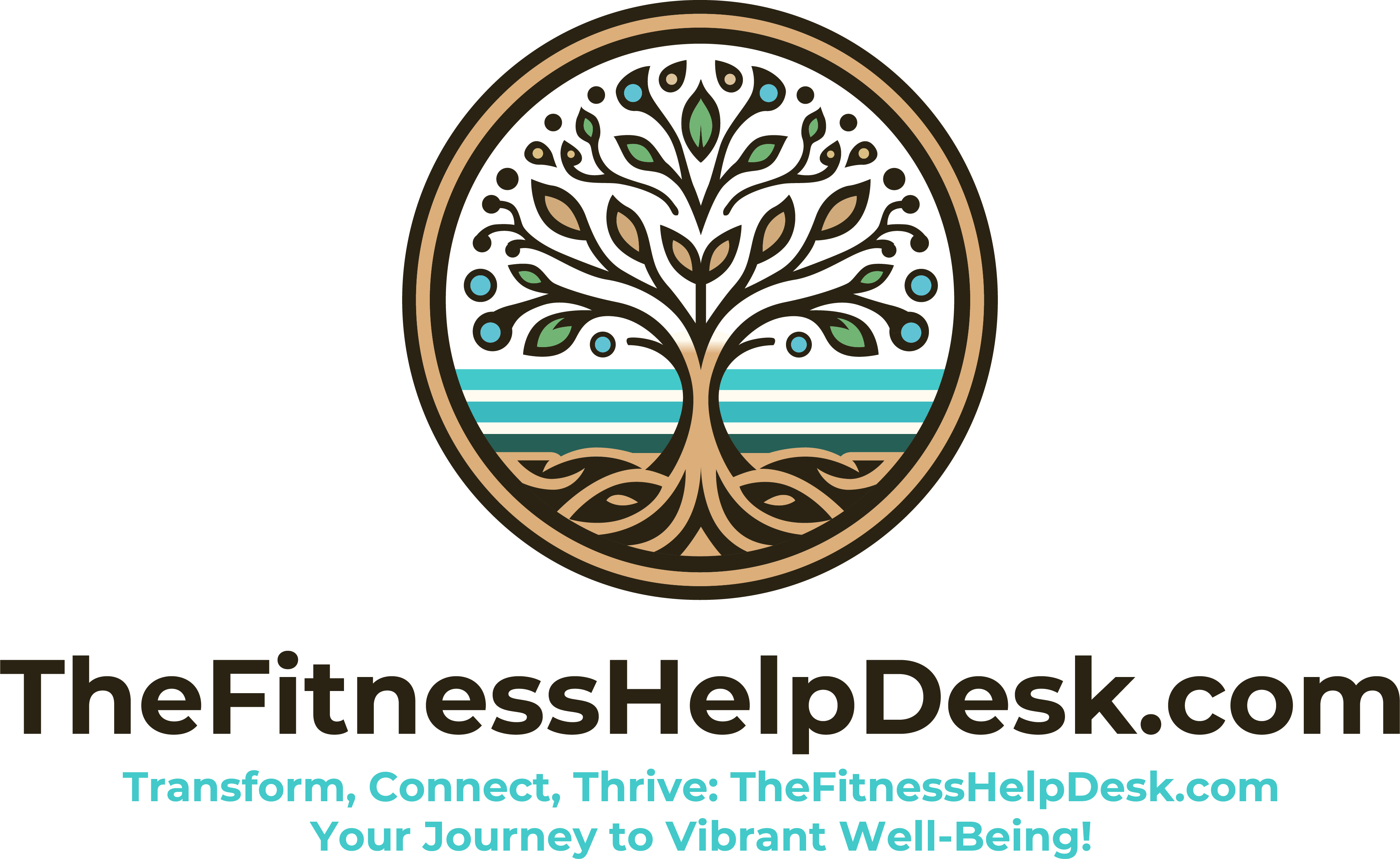Introduction
Discover essential posture correction exercises for seniors designed to enhance overall health and quality of life. Maintaining good posture is crucial, especially as you age, helping to reduce pain, improve balance, and increase stability. This guide provides practical tips and exercises, expertly tailored to help seniors strengthen their muscles and improve their posture effectively. Whether you’re looking to alleviate back pain or simply enhance your daily function, our step-by-step approach will guide you towards achieving better posture and a healthier lifestyle.
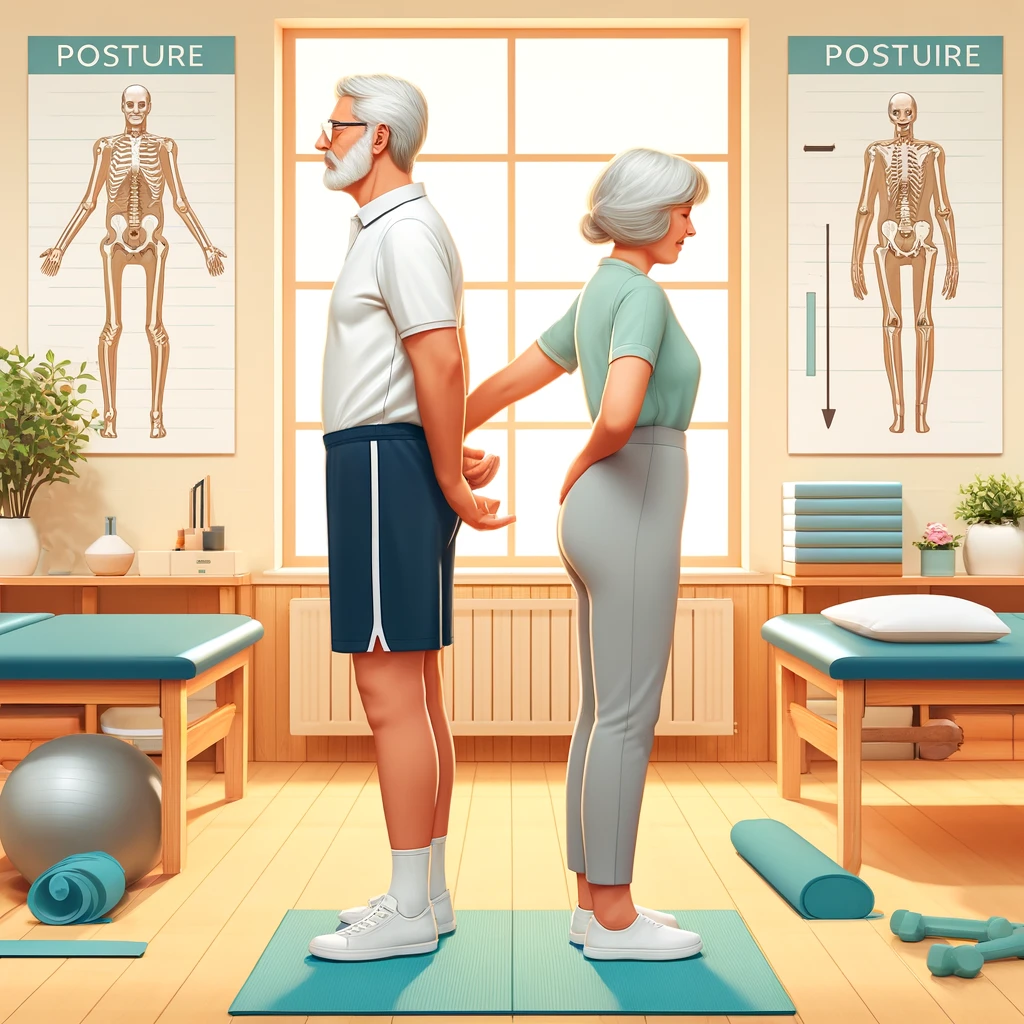
- Maintaining good posture is vital at any age, but it becomes increasingly important for seniors.
- With age, muscles tend to weaken, and a lack of physical activity can contribute to the decline in posture, leading to discomfort and a variety of health issues.
- In this detailed guide, we’ll explore effective posture correction exercises for seniors, offering step-by-step instructions, expert advice, and motivational insights to help improve alignment and overall well-being.
Why Good Posture Matters for Seniors
Good posture is crucial for more than just aesthetic reasons; it plays a significant role in overall health, especially for seniors. Here are a few reasons why maintaining good posture is essential:
Reduces Pain
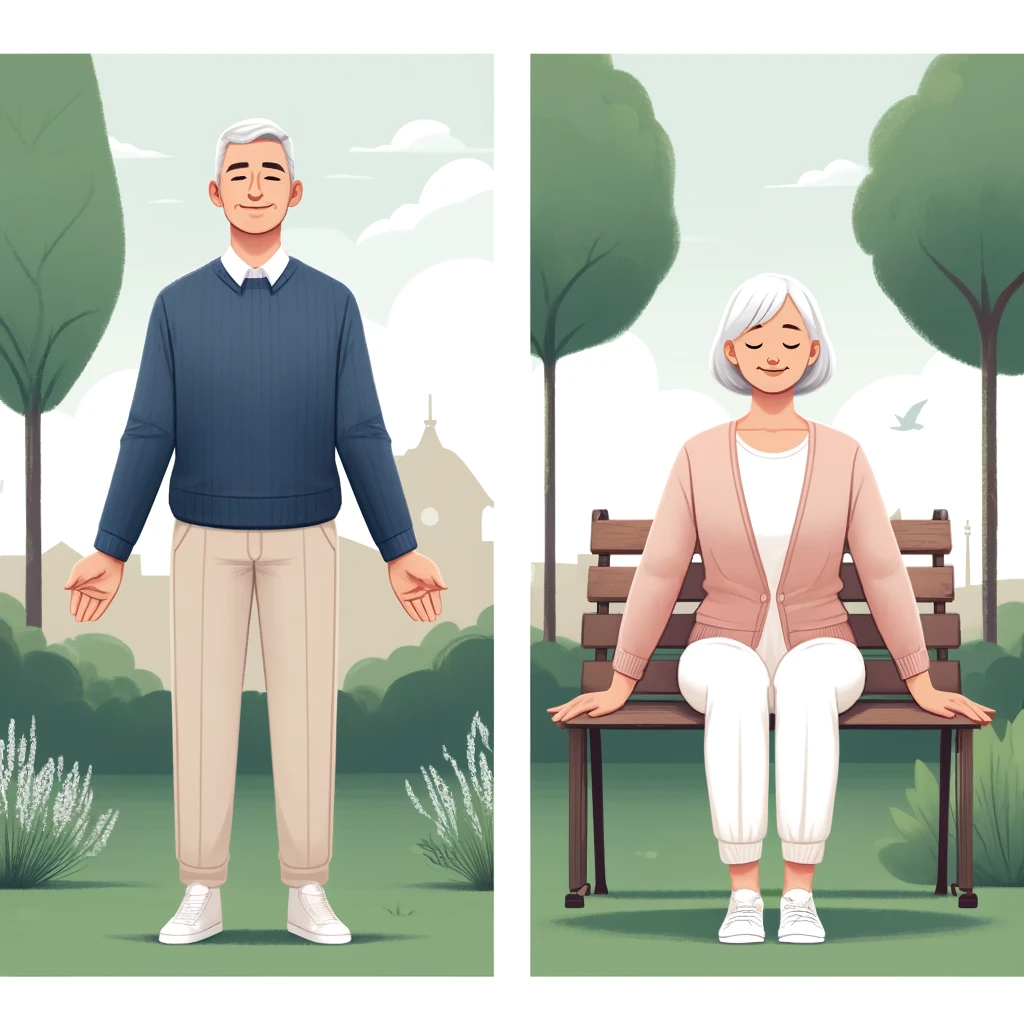
- Impact on Musculoskeletal Health: Proper posture aligns the spine and distributes body weight evenly across the structure of the skeleton. This alignment reduces undue stress on joints, ligaments, and muscles, particularly in the back, neck, and shoulders. For seniors, who may already be experiencing age-related wear and tear on these areas, maintaining good posture can significantly decrease the occurrence of pain and discomfort, leading to a more comfortable and active lifestyle.
Improves Balance and Stability
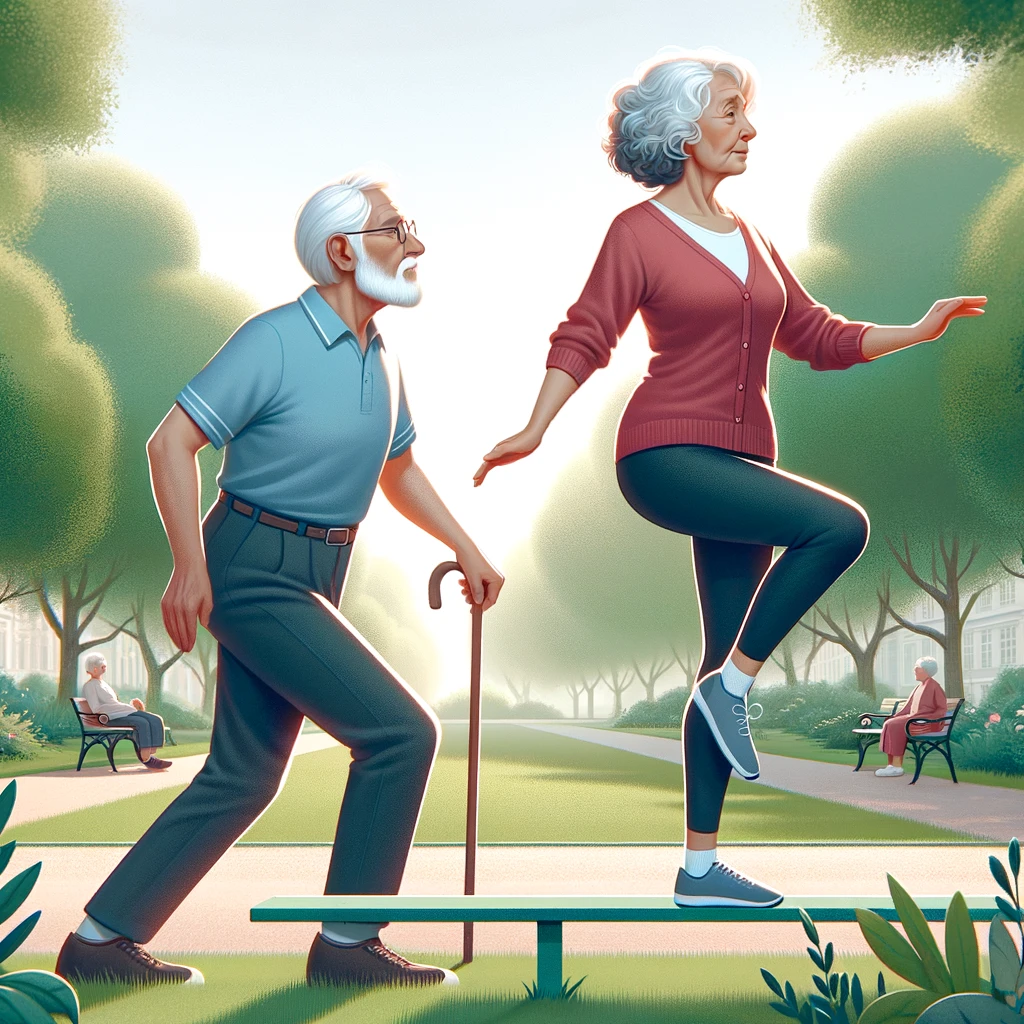
- Prevention of Falls: Good posture contributes directly to better balance by ensuring the center of gravity is properly aligned over the base of support. This stability is crucial for preventing falls, which are a common risk for seniors and can lead to serious injuries. Enhanced posture through targeted exercises can strengthen core muscles, further stabilizing seniors and giving them more confidence in their movements.
Enhances Breathing
- Optimal Lung Function: An upright posture opens up the chest and allows for the lungs to expand fully during breathing. This is particularly beneficial for seniors who might experience reduced lung capacity from years of less-than-ideal posture. Improved breathing not only enhances oxygen intake, crucial for cell function and energy levels, but also helps to manage or improve respiratory conditions common in older adults.

Boosts Digestion and Circulation
- Internal Organ Function: Good posture allows the internal organs in the abdominal cavity to assume their natural position without undue compression. This arrangement helps to promote better digestion and absorption of nutrients, which are vital for maintaining energy and health. Additionally, proper posture supports better circulation, ensuring that blood flows freely to organs and extremities, which is essential for overall health and the healing of tissues.
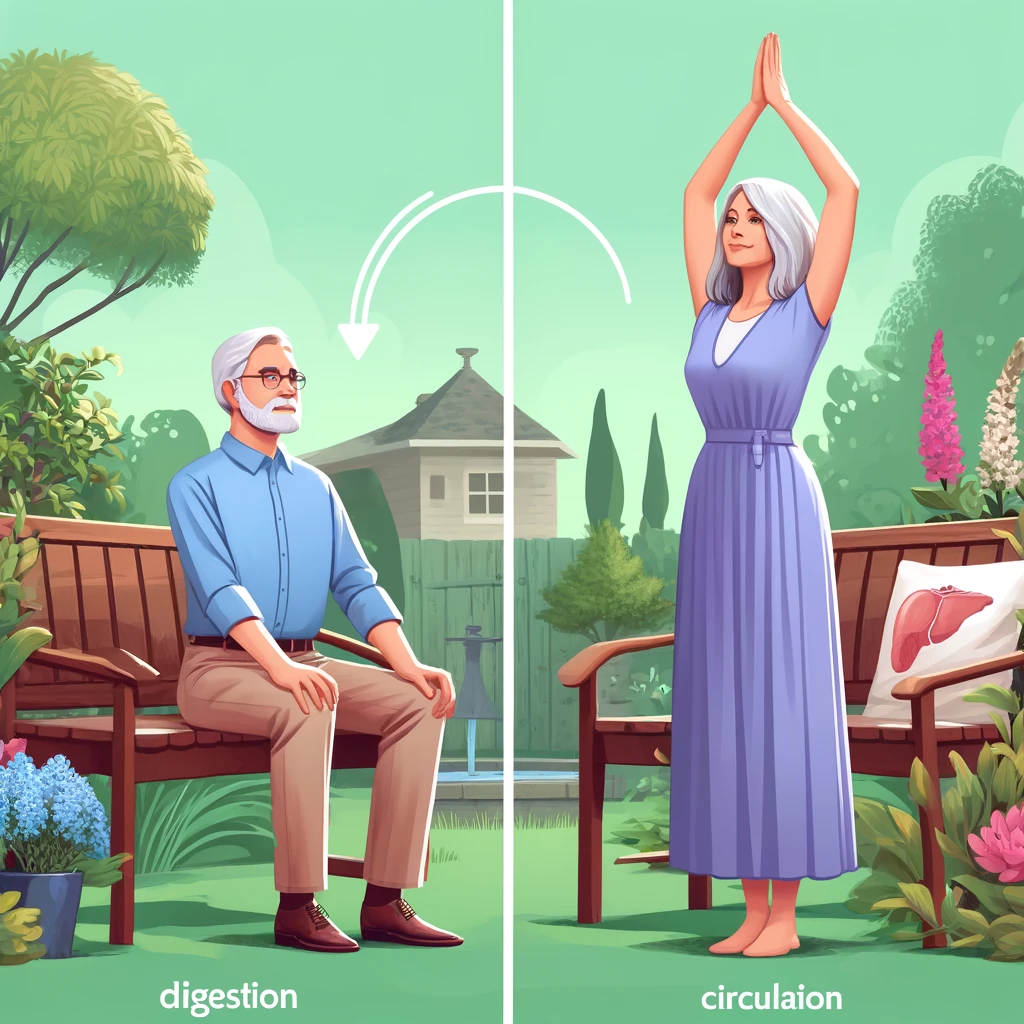
Supports Cognitive Function and Memory
- Brain Health Benefits: Maintaining an upright posture not only impacts physical health but also has significant benefits for cognitive function. By enhancing blood flow, good posture ensures that the brain receives sufficient oxygen and nutrients. This support helps to maintain cognitive functions and can reduce the risk of dementia and other brain-related conditions in seniors.

Key Posture Correction Exercises for Seniors
Incorporating simple posture correction exercises into a daily routine can significantly enhance quality of life. Here are some tailored exercises designed to strengthen core and back muscles, improving posture effectively:
1. Chin Tucks

- Purpose and Benefits: Chin tucks are designed to strengthen the neck muscles, improve neck posture, and alleviate the forward head posture that is common in seniors. This exercise helps in realigning the spine and reducing neck strain and headaches.
- Detailed Steps:
- Sit or stand with a straight spine.
- Gently draw your chin straight back, creating a “double chin.”
- Hold for 5 seconds to engage the muscles at the front of the neck.
- Release and repeat several times for maximum benefit.
2. Shoulder Blade Squeeze

- Purpose and Benefits: This exercise targets the muscles around the shoulder blades and upper back, crucial for correcting rounded shoulders and improving upper body posture. It aids in reducing upper back pain and helps in maintaining a straighter posture.
- Detailed Steps:
- Sit or stand with your arms relaxed at your sides.
- Slowly draw your shoulders back and squeeze your shoulder blades together.
- Hold this squeeze for 5 seconds, feeling the stretch in your chest and shoulders.
- Relax and repeat, aiming for 10-15 repetitions.
3. Wall Angels
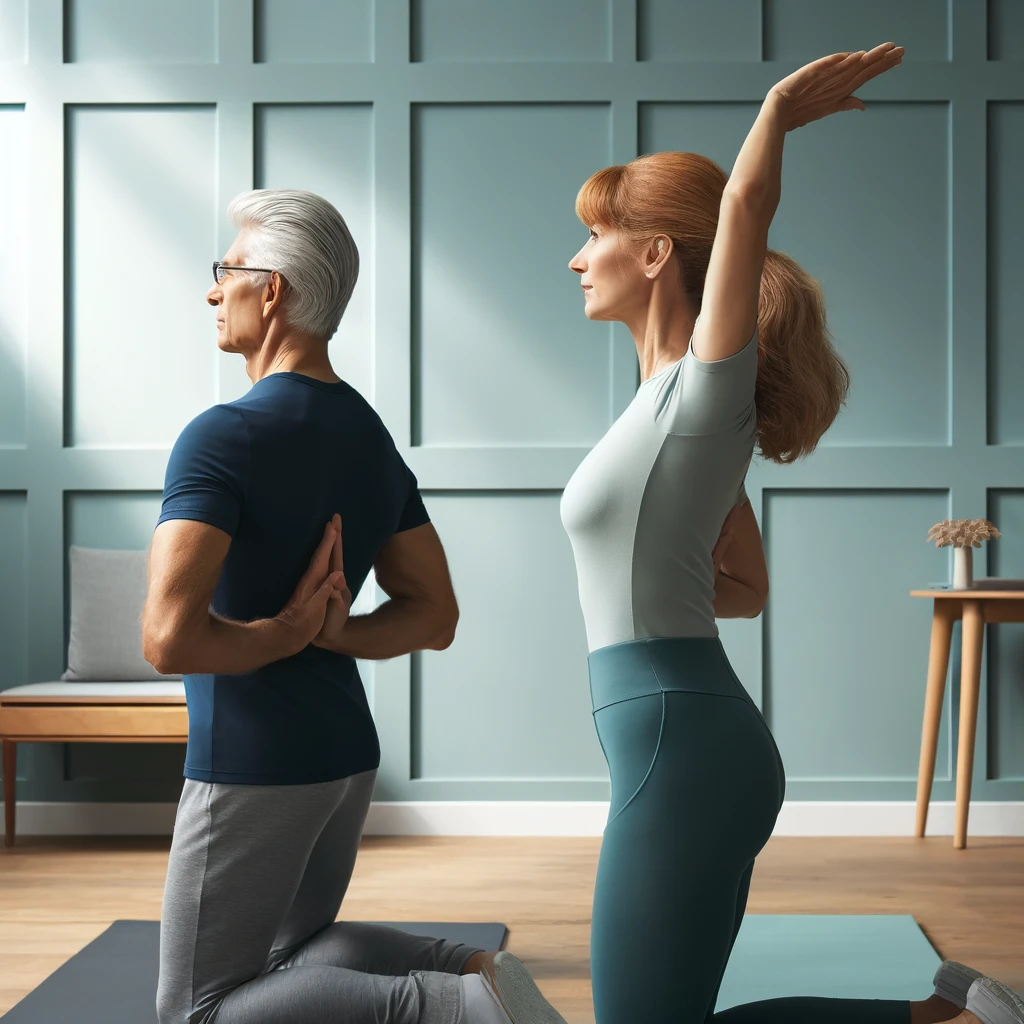
- Purpose and Benefits: Wall angels work the shoulders, upper back, and neck muscles, promoting mobility and proper alignment of the spine. This exercise is particularly effective for seniors with stiffness or decreased mobility in their upper body.
- Detailed Steps:
- Stand with your back flat against a wall, feet slightly forward.
- Raise your arms with elbows bent so your upper arms are parallel to the floor.
- Slowly slide your arms up to form a “Y” and then back down.
- Repeat while keeping your back and arms flat against the wall to enhance muscle control and flexibility
4. Bridging
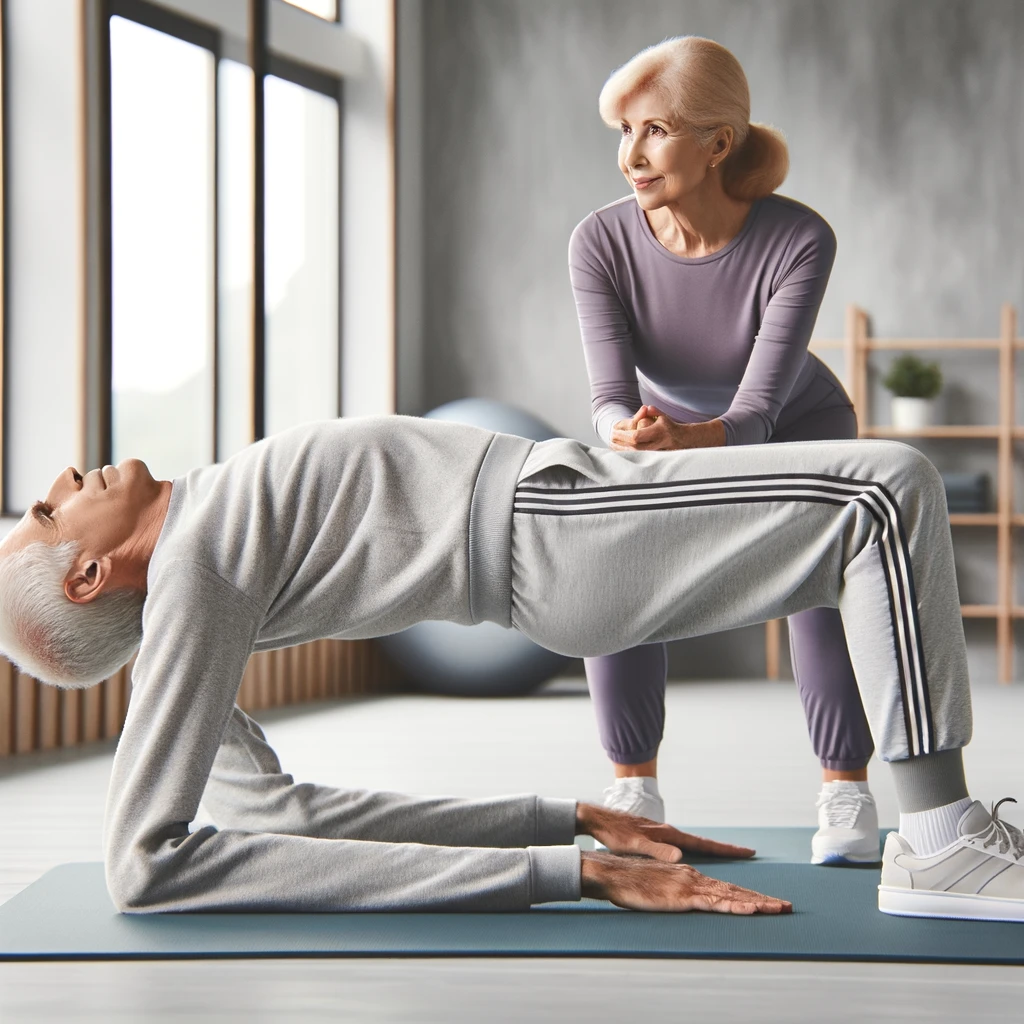
- Purpose and Benefits: Bridging strengthens the lower back, glutes, and hamstrings, which are vital for posture support. This exercise enhances core stability and reduces the risk of lower back pain.
- Detailed Steps:
- Lie on your back with knees bent and feet flat on the floor, hip-width apart.
- Press your feet into the floor and lift your hips, creating a straight line from your shoulders to your knees.
- Hold the bridge for three seconds, then slowly lower your hips to the floor.
- Repeat 10 times, focusing on using your glutes and core to lift your hips.
Creating a Balanced Routine
Creating a balanced routine is vital for seniors when it comes to maintaining good posture and overall health. It’s not just about incorporating specific exercises; it’s about integrating these activities into a daily regimen that promotes long-term well-being and enhances quality of life.
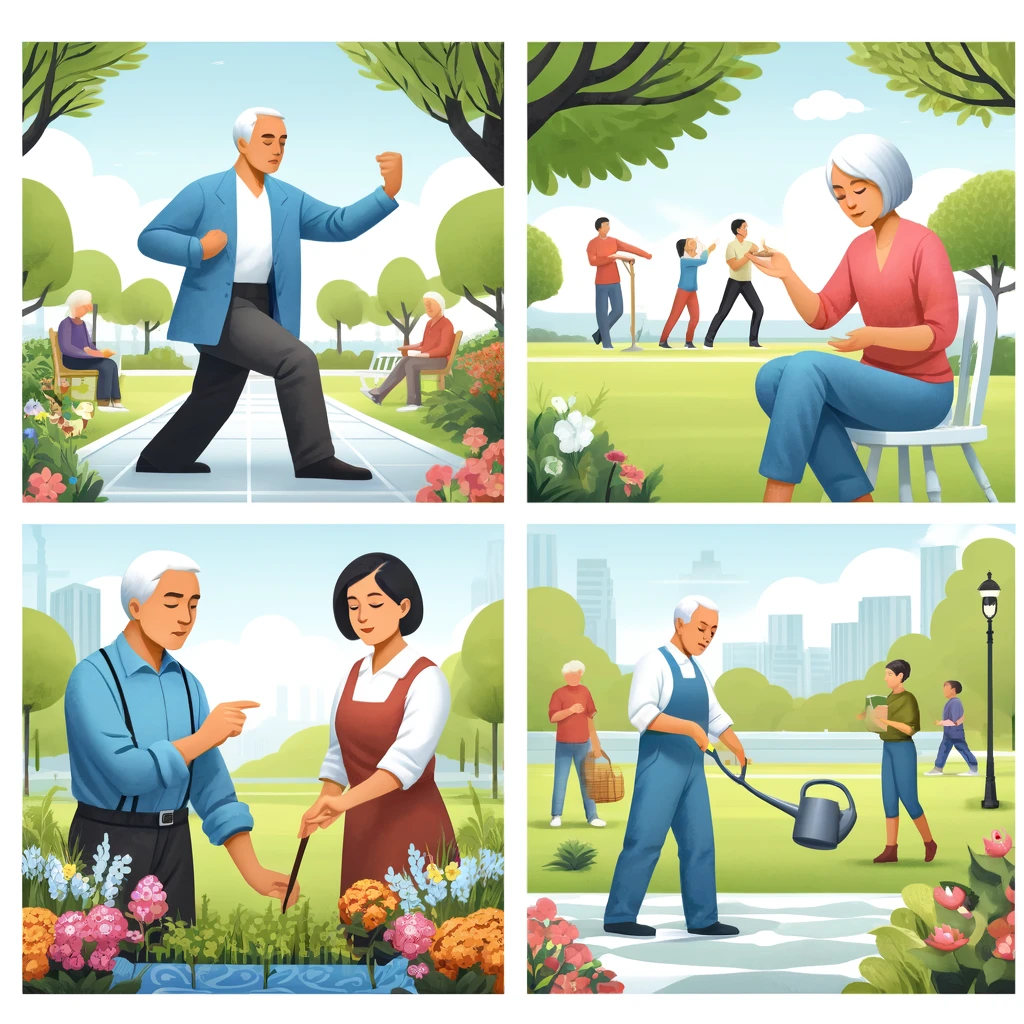
Frequency
- Consistent Exercise: Regularity is key. Seniors should aim to engage in posture correction exercises daily. This consistency helps in reinforcing good habits and ensures that the benefits of the exercises are sustained over time.
- Comprehensive Fitness: Besides posture-specific exercises, incorporating a mix of cardiovascular, strength, flexibility, and balance training each week is essential. This varied approach prevents overuse injuries and ensures all muscle groups are engaged and strengthened.
Intensity
- Appropriate Levels: The intensity of the exercises should be tailored to the individual’s health and fitness level. Seniors should start gently, especially if new to exercising, and gradually increase the intensity under the guidance of a fitness professional to avoid any strain or injury.
- Listen to Your Body: It’s crucial for seniors to pay attention to their bodies and adjust the intensity of their workouts accordingly. If pain or discomfort is noticed, it’s important to scale back the intensity and consult a healthcare provider.
Duration
- Time Allocation: Ideally, seniors should aim for at least 150 minutes of moderate-intensity aerobic activity per week, as recommended by health authorities, along with muscle-strengthening activities on two or more days a week.
- Short Sessions: Sessions can be broken down into shorter durations, such as 10 to 15-minute blocks, to make exercises more manageable and less daunting. This approach can help maintain energy levels throughout the session and prevent fatigue.
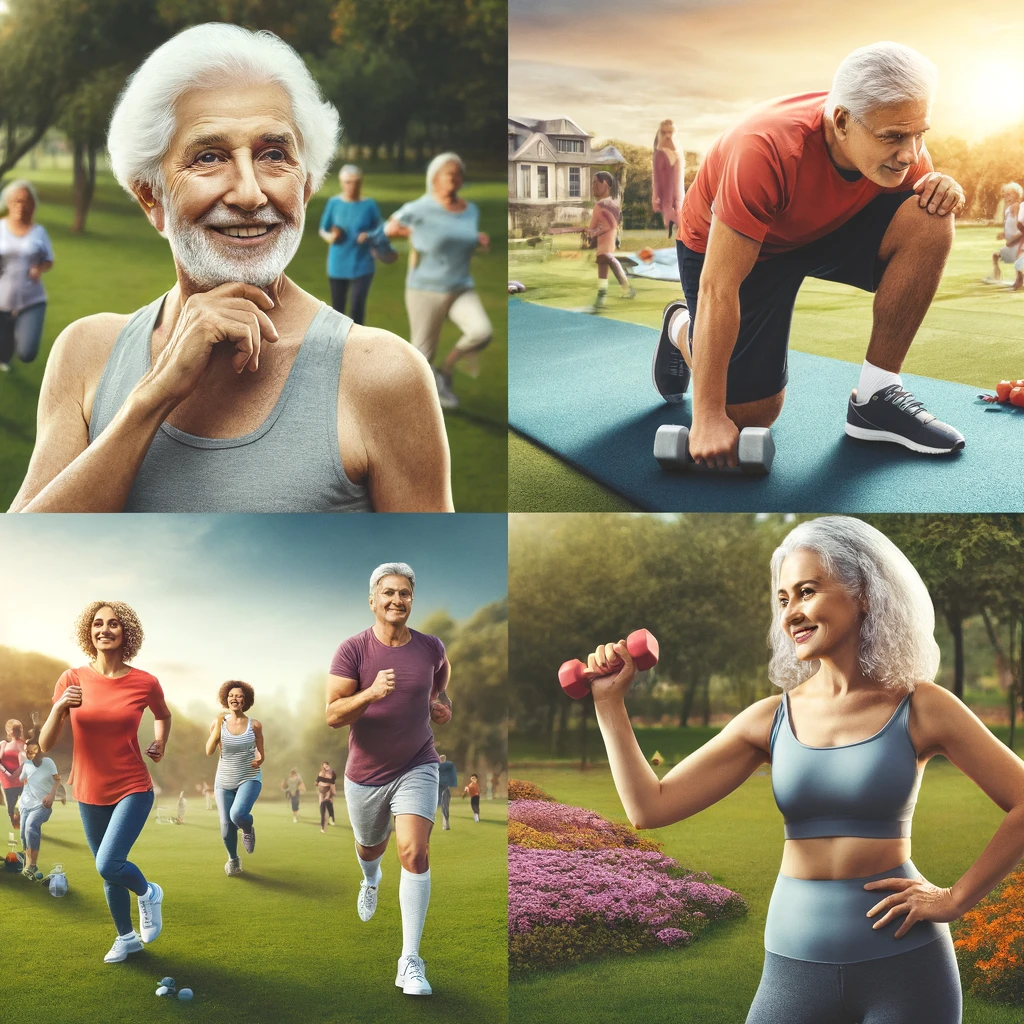
By adopting a balanced routine, seniors can significantly improve their posture, flexibility, and mobility. This balance not only enhances physical health but also contributes to greater independence and a higher quality of life. The key is regularity and moderation, ensuring that exercises are done consistently and at appropriate intensity levels to avoid overexertion and maximize benefits.
Motivational Quotes and Success Stories
To keep you inspired, here are a few quotes and stories from seniors who have successfully improved their posture and health through regular exercise:
- “Age is no barrier. It’s a limitation you put on your mind.” – Jackie Joyner-Kersee
- Success Story: John, a 72-year-old retiree, managed to reduce his back pain significantly after incorporating these posture exercises into his daily routine, improving both his mobility and his ability to engage in activities with his grandchildren.
Conclusion: Embrace a Healthier Posture
To wrap up, adopting a routine that incorporates posture correction exercises for seniors is more than a path to better posture—it’s a gateway to enhanced overall health and an enriched quality of life. Regularly practicing these targeted exercises can fortify your body’s core, bolster your balance, and diminish pain, leading to a more vibrant and active lifestyle.
Remember, consistency is your greatest ally. Integrating these exercises into your daily life and maintaining a balanced fitness regimen are essential steps towards achieving optimal health. Whether you’re working to improve your posture, enhance your mobility, or simply aiming to enjoy your golden years with fewer aches and more joy, the effort you invest in maintaining your body today pays dividends in your quality of life tomorrow.
About Steve Allison
An experienced personal trainer and nutrition specialist for seniors, emphasizes the importance of maintaining good posture as we age. With extensive experience and certification from NASM, Steve is dedicated to helping seniors achieve their health and fitness goals through personalized exercise and nutrition plans. For more insights and personalized advice, visit TheFitnessHelpDesk.com.










